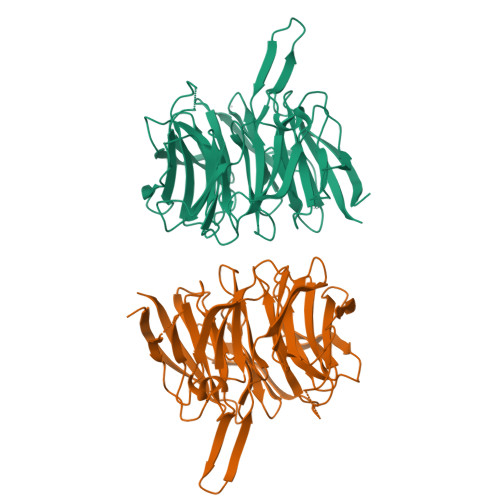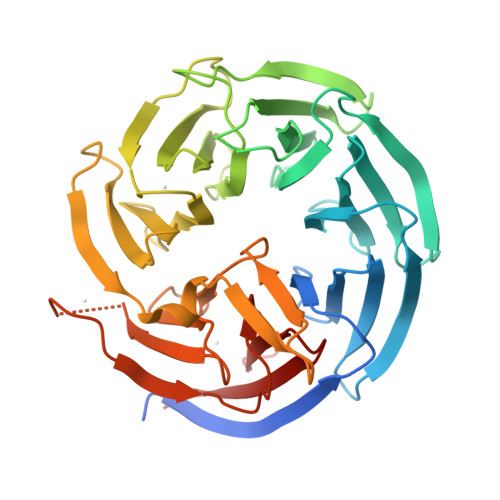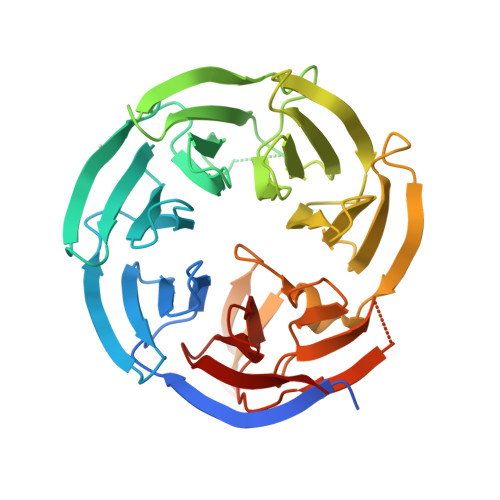Discovery of a First-in-Class Small-Molecule Ligand for WDR91 Using DNA-Encoded Chemical Library Selection Followed by Machine Learning.
Ahmad, S., Xu, J., Feng, J.A., Hutchinson, A., Zeng, H., Ghiabi, P., Dong, A., Centrella, P.A., Clark, M.A., Guie, M.A., Guilinger, J.P., Keefe, A.D., Zhang, Y., Cerruti, T., Cuozzo, J.W., von Rechenberg, M., Bolotokova, A., Li, Y., Loppnau, P., Seitova, A., Li, Y.Y., Santhakumar, V., Brown, P.J., Ackloo, S., Halabelian, L.(2023) J Med Chem 66: 16051-16061
- PubMed: 37996079
- DOI: https://doi.org/10.1021/acs.jmedchem.3c01471
- Primary Citation of Related Structures:
6VYC, 8SHJ, 8T55 - PubMed Abstract:
WD40 repeat-containing protein 91 (WDR91) regulates early-to-late endosome conversion and plays vital roles in endosome fusion, recycling, and transport. WDR91 was recently identified as a potential host factor for viral infection. We employed DNA-encoded chemical library (DEL) selection against the WDR domain of WDR91, followed by machine learning to predict ligands from the synthetically accessible Enamine REAL database. Screening of predicted compounds identified a WDR91 selective compound 1 , with a K D of 6 ± 2 μM by surface plasmon resonance. The co-crystal structure confirmed the binding of 1 to the WDR91 side pocket, in proximity to cysteine 487, which led to the discovery of covalent analogues 18 and 19 . The covalent adduct formation for 18 and 19 was confirmed by intact mass liquid chromatography-mass spectrometry. The discovery of 1 , 18 , and 19 , accompanying structure-activity relationship, and the co-crystal structures provide valuable insights for designing potent and selective chemical tools against WDR91 to evaluate its therapeutic potential.
Organizational Affiliation:
Structural Genomics Consortium, University of Toronto, Ontario M5G 1L7, Canada.

















